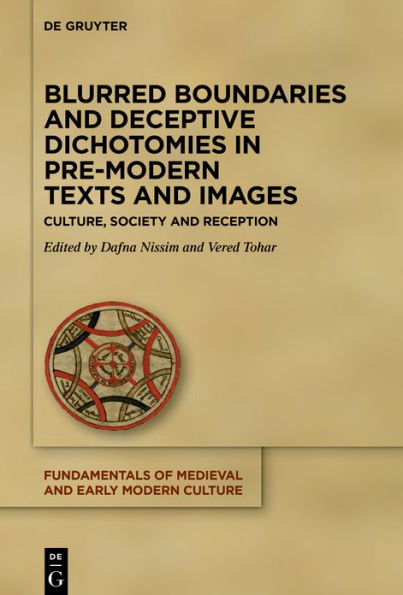This collection of essays focuses on the way blurred boundaries are represented in pre-modern texts and visual art and how they were received and perceived by their audiences: readers, listeners, and viewers. According to the current understanding that opposing cognitive categories that are so common in modern thinking do not apply to pre-modern mentalities, we argue that individuals in medieval and pre-modern societies did not necessarily consider sacred and secular, male and female, real and fictional, and opposing emotions as absolute dichotomies.
The contributors to the present collection examine a wide range of cultural artifacts – literary texts, wall paintings, sculptures, jewelry, manuscript illustrations, and various objects as to what they reflect regarding the dominant perceptual system – the network of beliefs, worldviews, presumptions, values, and norms of viewing/reading/hearing different from modern epistemology strongly predicated on the binary nature of things and people. The essays suggest that analyzing pre-modern cultural works of art or literature in light of reception theory can lead to a better understanding of how those cultural products influenced individuals and impacted their thoughts and actions.
This collection of essays focuses on the way blurred boundaries are represented in pre-modern texts and visual art and how they were received and perceived by their audiences: readers, listeners, and viewers. According to the current understanding that opposing cognitive categories that are so common in modern thinking do not apply to pre-modern mentalities, we argue that individuals in medieval and pre-modern societies did not necessarily consider sacred and secular, male and female, real and fictional, and opposing emotions as absolute dichotomies.
The contributors to the present collection examine a wide range of cultural artifacts – literary texts, wall paintings, sculptures, jewelry, manuscript illustrations, and various objects as to what they reflect regarding the dominant perceptual system – the network of beliefs, worldviews, presumptions, values, and norms of viewing/reading/hearing different from modern epistemology strongly predicated on the binary nature of things and people. The essays suggest that analyzing pre-modern cultural works of art or literature in light of reception theory can lead to a better understanding of how those cultural products influenced individuals and impacted their thoughts and actions.

Blurred Boundaries and Deceptive Dichotomies in Pre-Modern Texts and Images: Culture, Society and Reception
265
Blurred Boundaries and Deceptive Dichotomies in Pre-Modern Texts and Images: Culture, Society and Reception
265Related collections and offers

Product Details
| ISBN-13: | 9783111244105 |
|---|---|
| Publisher: | De Gruyter |
| Publication date: | 12/18/2023 |
| Series: | Fundamentals of Medieval and Early Modern Culture , #28 |
| Sold by: | Barnes & Noble |
| Format: | eBook |
| Pages: | 265 |
| File size: | 14 MB |
| Note: | This product may take a few minutes to download. |
| Age Range: | 18 Years |
